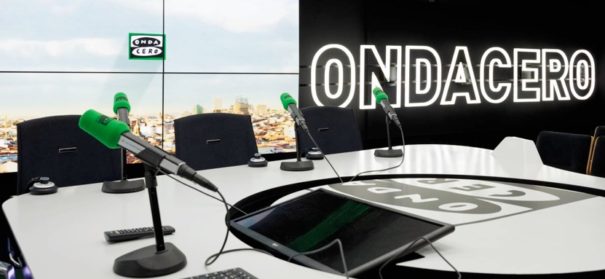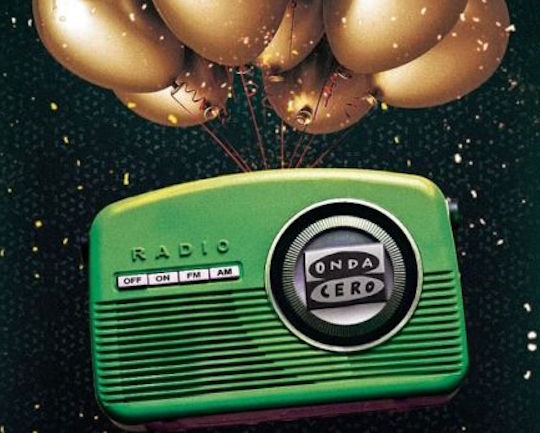Onda Cero cumple 30 años
En la actualidad, la cadena generalista de Atresmedia Radio continúa su permanente proceso de evolución, con el foco puesto en las nuevas formas de consumo audiovisual por parte de los oyentes y de la sociedad.
Onda Cero Radio inició sus emisiones el 26 de noviembre de 1990. En esa fecha la guerra del Golfo da sus primeros pasos tras la invasión de Kuwait por parte de tropas iraquíes; Reino Unido se repone a la dimisión de Margaret Thatcher; el sindicalista Lech Walesa se proclama presidente de Polonia; el Barça es cada vez más líder… y a las siete de la mañana nace una nueva cadena de emisoras, Onda Cero Radio, para contarlo todo.
Impulsada por la Organización Nacional de Ciegos (ONCE) y sobre la base de la Cadena Rato de emisoras, desde el mismo momento de su nacimiento, Onda Cero se posiciona como uno de los grandes medios de nuestro país, adquiriendo una gran notoriedad y un profundo compromiso con los oyentes. Algo que hoy es posible gracias a la pertenencia de la cadena a Atresmedia.
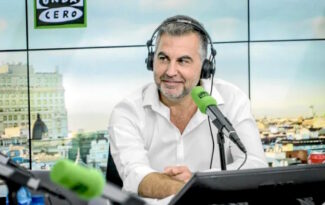 En esta línea, sus máximos responsables, el presidente del Grupo, José Creuheras, el consejero delegado, Silvio González, y el director general de Atresmedia Radio, Ramón Osorio, han puesto de manifestó en repetidas ocasiones la importancia de Onda Cero a la hora de completar al grupo multimedia plural y alineado con los intereses de la sociedad.
En esta línea, sus máximos responsables, el presidente del Grupo, José Creuheras, el consejero delegado, Silvio González, y el director general de Atresmedia Radio, Ramón Osorio, han puesto de manifestó en repetidas ocasiones la importancia de Onda Cero a la hora de completar al grupo multimedia plural y alineado con los intereses de la sociedad.
Desde sus orígenes, la credibilidad, la pluralidad y la cercanía han sido las señas de identidad de la cadena, por la que han desfilado una gran parte de los principales profesionales de la radio, el periodismo y la comunicación españoles: Luis de Benito, Luis del Olmo, Carlos Herrera, Concha García Campoy, J.J. Santos, Andrés Aberasturi, Pablo Motos, Jesús Quintero, Javier González Ferrari, Félix Madero, José María García, Reyes Monforte, José Joaquín Brotons, Elena Markínez, Víctor Arribas, Manuel Antonio Rico, Tico Medina, Miguel Ángel García Juez, Marta Robles, Victoria Prego, Antonio Jiménez, Javier Gurruchaga, Javier Ares, Manu Carreño, Isabel Gemio, Gomaespuma, Luján Argüelles, Iñaki Cano, Ángel Rodríguez, Héctor Fernández…
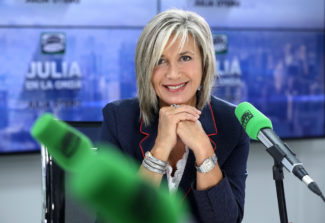 En la actualidad, la parrilla de Onda Cero se sustenta sobre el extraordinario equipo de figuras de reconocido prestigio en el mundo de la comunicación como Carlos Alsina (Más de uno), Julia Otero (Julia en la onda), Juan Ramón Lucas (La brújula), Jaime Cantizano (Por fin no es lunes), José Ramón de la Morena (El transistor), Elena Gijón (Noticias mediodía), Javier Ruiz Taboada y Antonio Esteva (Radioestadio), Esther Eiros (Gente viajera), José Luis Salas (No son horas), Bruno Cardeñosa y Silvia Casasola (La rosa de los vientos), Rubén Amón (La cultureta), Juan Diego Guerrero (Noticias fin de semana), Carlos Rodríguez (Como el perro y el gato), Bartolomé Beltrán (En buenas manos), Lorenzo Fernández Bueno y Laura Falcó (El colegio invisible), y Pablo Rodríguez y Soledad de Juan (Onda agraria).
En la actualidad, la parrilla de Onda Cero se sustenta sobre el extraordinario equipo de figuras de reconocido prestigio en el mundo de la comunicación como Carlos Alsina (Más de uno), Julia Otero (Julia en la onda), Juan Ramón Lucas (La brújula), Jaime Cantizano (Por fin no es lunes), José Ramón de la Morena (El transistor), Elena Gijón (Noticias mediodía), Javier Ruiz Taboada y Antonio Esteva (Radioestadio), Esther Eiros (Gente viajera), José Luis Salas (No son horas), Bruno Cardeñosa y Silvia Casasola (La rosa de los vientos), Rubén Amón (La cultureta), Juan Diego Guerrero (Noticias fin de semana), Carlos Rodríguez (Como el perro y el gato), Bartolomé Beltrán (En buenas manos), Lorenzo Fernández Bueno y Laura Falcó (El colegio invisible), y Pablo Rodríguez y Soledad de Juan (Onda agraria).
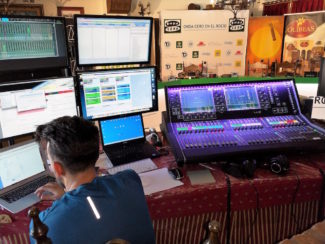 De la antena al universo digital
De la antena al universo digital
Onda Cero ha acompañado a la sociedad española en su extraordinario proceso de transformación, retransmitiendo cada día los principales acontecimientos de la actualidad internacional, nacional, regional y local, gracias a un equipo de profesionales comprometidos al máximo con su trabajo: periodistas, locutores, técnicos, comerciales, administrativos…
Todos ellos dan -y han dado- cada día lo mejor de sí mismos para lograr convertir la radio de Atresmedia en una de las grandes cadenas a nivel nacional.
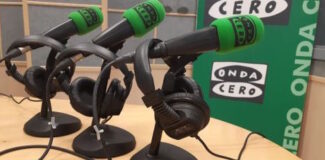 La primera voz que sonó en Onda Cero aquel 26 de noviembre fue la de la periodista Ángela Bodega, que dio paso a una primera programación que conjugaba la experiencia con la juventud, la información con el entretenimiento: Luis de Benito, Alfonso Arús, Andrés Aberasturi, José Antonio Ovies, Lourdes Zuriaga, Juan Antonio Cebrián, José Manuel Muñoz, Javier Ruiz Taboada, Mariví Romero, Luis Ignacio González, Massiel, Jorge Lago o Ramoncín fueron algunos de los pioneros de aquella radio cuyo primer logotipo fue creado por Xavièr Mariscal, uno de los diseñadores más vanguardistas del momento.
La primera voz que sonó en Onda Cero aquel 26 de noviembre fue la de la periodista Ángela Bodega, que dio paso a una primera programación que conjugaba la experiencia con la juventud, la información con el entretenimiento: Luis de Benito, Alfonso Arús, Andrés Aberasturi, José Antonio Ovies, Lourdes Zuriaga, Juan Antonio Cebrián, José Manuel Muñoz, Javier Ruiz Taboada, Mariví Romero, Luis Ignacio González, Massiel, Jorge Lago o Ramoncín fueron algunos de los pioneros de aquella radio cuyo primer logotipo fue creado por Xavièr Mariscal, uno de los diseñadores más vanguardistas del momento.
En la actualidad, la cadena generalista de Atresmedia Radio continúa su permanente proceso de evolución, con el foco puesto en las nuevas formas de consumo audiovisual por parte de los oyentes y de la sociedad.
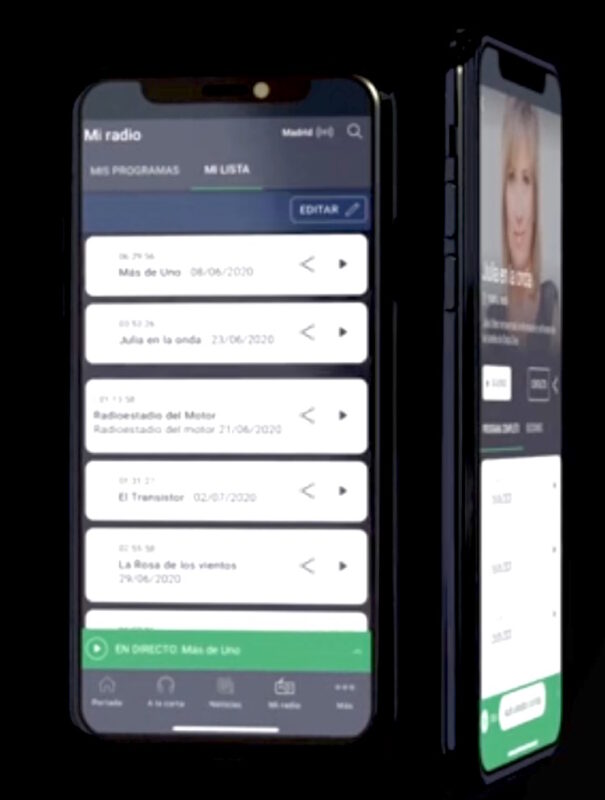 De este modo, cada día se trabaja en la transformación digital de Onda Cero, que -en 1996- fue ya la primera radio a nivel europeo en emitir su programación en directo en Internet. Hoy, se puede escuchar a través de la Red de Emisoras, pero también de la web y app de ondacero.es, los asistentes de voz, los dispositivos para automóviles o la TDT, creando cada día desarrollos que permitan una mejor experiencia para los oyentes.
De este modo, cada día se trabaja en la transformación digital de Onda Cero, que -en 1996- fue ya la primera radio a nivel europeo en emitir su programación en directo en Internet. Hoy, se puede escuchar a través de la Red de Emisoras, pero también de la web y app de ondacero.es, los asistentes de voz, los dispositivos para automóviles o la TDT, creando cada día desarrollos que permitan una mejor experiencia para los oyentes.
En esta línea, ondacero.es ha estrenado en las últimas semanas una nueva app y una nueva web, que permite acceder de una forma ordenada a todos los programas y secciones de la cadena, así como a contenidos creados exclusivamente para el universo digital.
Onda Cero, temporada a temporada
1990-1991
Onda Cero Radio comenzó sus emisiones a las siete de la mañana del 26 de noviembre de 1990, con la voz de la locutora Ángela Bodega. La primera sede de la cadena estaba ubicada en el número 54 de la Calle Velázquez de Madrid.
La parrilla de la primera temporada incluía programas presentados y dirigidos por auténticas figuras del periodismo, la comunicación y la sociedad española del momento: Luis de Benito, Alfonso Arús, Andrés Aberasturi, José Antonio Ovies, Lourdes Zuriaga, Juan Antonio Cebrián, Javier Ruiz Taboada, Mariví Romero, Luis Ignacio González, Massiel y Ramoncín, entre otros.
El logotipo de Onda Cero fue un diseño del ilustrador Xavièr Mariscal y supuso una auténtica ruptura el concepto de imagen corporativa que se adoptaba hasta entonces en una empresa de comunicación.
1991-1992
El mundo de la radio se conmociona el 2 de julio de 1991 con el fichaje de Luis del Olmo por Onda Cero, procedente de Cadena Cope. La programación se presenta ante los medios de comunicación el 30 de septiembre de 1991, con una edición especial del programa ‘Protagonistas’.
Luego vendrían las incorporaciones de Julia Otero, Juan Luis Cano y Guillermo Fesser, entre otros. La periodista gallega, afincada en Cataluña, convierte ‘La Radio de Julia’ -de once a una de la madrugada-, en un espectáculo de la palabra y las ideas, con participación de los oyentes, invitados especiales, humor y una buena dosis de sensualidad. Gomaespuma despliega su ingenio -de lunes a viernes, entre las 18.00 y 19.00 horas- con un programa de humor informativo.
1992-1993
Miguel Durán es nombrado presidente de Onda Cero, sustituyendo en el puesto a José María Arroyo. A continuación, se produce la incorporación de Fernando Ónega como director general, sustituyendo a otro grande de la radio, Tomás Martín Blanco.
Con Fernando Ónega se adelanta la emisión de ‘Protagonistas’ a las 8.30 horas y ‘La Radio de Julia’ pasa a ser el magacín vespertino de Onda Cero. También se potencian los informativos con el fichaje de Javier González Ferrari para dirigir y presentar el informativo matinal ‘Al día’. Ernesto Sáenz de Buruaga se une al proyecto haciéndose cargo del ‘Informativo de las dos’, mientras que Manuel Antonio Rico se pone al frente del ‘Informativo de las ocho’. En esta etapa se crea el programa de información y opinión ‘La brújula’.
1993-1994
‘Protagonistas’, líder ya de audiencia, es el magacín más largo de la radiodifusión española, con cinco horas de emisión (de 8.00 a 13.00 horas). ‘La radio de Julia’ se amplía en una hora, de 17.00 a 20.00 horas, y se incorpora a la cadena Juan Ramón Lucas para presentar el informativo más madrugador de la radio española: ‘Al día’, de 5.00 a 8.00 horas.
Una de las novedades de la temporada es ‘Lo mejor del día’, entre las 00.00 y la 1.00 horas, con José Antonio Abellán. También se estrena ‘Gente viajera’, dirigido y presentado por Esther Eiros.
A partir del verano de 1993, Onda Cero emite sus programas desde unos nuevos estudios centrales, en el Paseo del Pintor Rosales, siendo a partir de entonces la única cadena de radio que emite la programación en estéreo para España.
1994-1995
Aunque ya dispone de dos programas líderes de audiencia –‘Protagonistas’ y ‘La radio de julia’ (Premio Ondas, 1994)-, la ONCE hace una nueva apuesta y ficha a Concha García Campoy para presentar el magacín de madrugada ‘Noches de Radio’. La parrilla la completa ‘La brújula’, dirigida por Ernesto Sáenz de Buruaga.
Se abre un hueco a la radio temática, con los programas ‘Oído al cante’, ‘Bienvenido Míster Chip’, ‘Taller de clásica’ y ‘Plaza de toros’, todos ellos ubicados en el fin de semana.
Onda Cero Música, también conocida como “la otra radio”, deja de ser una radiofórmula para adoptar el formato de radio convencional dirigida a un público joven. Jesús Quintero, con ‘El lobo estepario’, y Mariscal Romero, con ‘Matinal Romero Show’, son los pilares de la nueva apuesta.
1995-1996
Ligeros cambios en un modelo que funciona. La audiencia aumenta, a la vez que se introducen importantes novedades tecnológicas (RDS y sistema de emisión digital).
En cuanto a la programación, Juan Ramón Lucas reajusta el horario del informativo ‘Al día’, que pasa a emitirse entre las 6.00 y las 8.00 horas, y Reyes Monforte se instala en la madrugada con ‘País de locos’.
En mayo de 1995 Buruaga abandona la cadena. La dirección de ‘La brújula’ es asumida por Concha García Campoy, y Félix Madero es nombrado director de Informativos.
En esta temporada tiene lugar el lanzamiento de Onda Melodía. Se trata de una radiofórmula con música del recuerdo dirigida a un público adulto, pero con espíritu joven.
1996-1997
El 9 de septiembre de 1996 se produce un hecho destacable en la historia de la cadena: el Príncipe de Asturias inaugura los estudios en el Paseo Pintor Rosales. Coincidiendo con esta visita, se presenta la programación de la nueva temporada. Destaca la consolidación del programa ‘El penalti’ y el refuerzo del informativo ‘La brújula’, con Concha García Campoy al frente.
El Príncipe de Asturias visitó las instalaciones acompañado por el ministro de Trabajo, Javier Arenas; el de Fomento, Rafael Arias Salgado; así como por Ruiz-Gallardón, presidente de la Comunidad de Madrid, y Álvarez del Manzano, alcalde de la capital, entre otros.
En mayo de 1996 las emisiones pueden escucharse en todo el mundo a través de Internet, siendo Onda Cero la primera cadena europea que lo lleva a cabo.
1997-1998
Juan Ramón Lucas y José Antonio Luque dejan la radio para irse a tele. Accede a la dirección de ‘El penalti’ José Joaquín Brotons. Este veterano profesional llega a Onda Cero con la sana intención de competir en el difícil tramo horario nocturno de la información deportiva.
Por otra parte, los datos del EGM dejan constancia de que Onda Cero es la única cadena de radio comercial que logra consolidar sus resultados, con 1.861.000 oyentes. ‘La radio de Julia’ se afianza como líder de la tarde con 495.000 oyentes, y Luis del Olmo mantiene el liderazgo en buena parte del horario matinal.
Concha García Campoy (‘La brújula’), Carlos Alsina (‘Al día’) y Félix Madero (‘Las noticias de las dos’) contribuyen a aumentar el número de seguidores de una radio abierta y transgresora.
1998-1999
Nace ‘Radioestadio’, con Brotons. La incorporación de Elena Markínez con ‘Una noche de éstas’, y de Reyes Monforte al frente de ‘El club de las nueve”, son las grandes novedades de la temporada.
‘Protagonistas’ cumple 25 años y Luis del Olmo suprime el popular espacio ‘El debate sobre el estado de la acción’ debido a la enfermedad de uno de sus miembros más significativos, Luis Sánchez Polack (Tip).
En julio de 1999, cambio de propiedad de Onda Cero. Tras intensas negociaciones, Telefónica compra a la ONCE el 100 % de Uniprex S.A., empresa editora de la radio.
La cadena suscribe un acuerdo con el empresario Francisco Gayá, en virtud del cual se crea Europa FM, nueva cadena musical con implantación en todas las grandes capitales.
En un breve plazo de tiempo, el nuevo equipo alcanza acuerdos con Onda Rambla y Radio España y la cobertura de Onda Cero se multiplica.
1999-2000
El nuevo equipo directivo incorpora nuevas voces y espacios a la programación. Javier Algarra, Marta Robles, José Antonio Luque, Carlos Pumares, Alfonso Arús, Albert Lesan, Rafael Cerro, Tico Medina y José Ramón Pardo se suman al proyecto encabezado por Javier Gimeno de Priede. Un proyecto al que unos meses después se sumaría Pedro Díez, como consejero delegado.
Marta Robles se incorpora a la tarde de la cadena, que conjuga su juventud con el rigor de Javier Algarra (‘La brújula’) y el humor de Alfonso Arús (‘Ya te digo’).
El menú del fin de semana se enriquece con el nuevo programa de Concha García Campoy, ‘Hoy es domingo’, y con el espacio de reportajes ‘Cuenta la radio’, con Carlos Alsina.
2000-2001
Las voces de Carlos Herrera y José María García se unen ahora a las de Luis del Olmo o Concha García Campoy. Juntos conforman lo que el nuevo director general, Fernando Ónega, denomina “una antología de la radio española”.
‘Protagonistas’ adelanta su emisión a las 6.00 horas, apoyándose en Carlos Alsina, un periodista calificado entonces por Luis del Olmo como “la esperanza blanca de la radio española”. Carlos Herrera abandona su retiro temporal en Miami y se pone al frente de las tardes después del verano, y José María García, con ‘Supergarcía en Onda Cero’, será la apuesta para la información deportiva.
2001-2002
En esta temporada se recupera la radio espectáculo en las madrugadas de los viernes, con Javier Gurruchaga, que presenta ‘Tren a Xanadú’.
Un acuerdo firmado con el diario El Mundo, en enero de 2001, potencia el valor informativo de la cadena y da como resultado la ampliación del horario de ‘La brújula’, que incorpora en la dirección a Victoria Prego y a un clásico de la radio como Antonio Jiménez.
En el fin de semana se rompen fronteras con ‘A toda América’, de Tico Medina, un programa de emisión simultánea en España e Hispanoamérica.
Se firma un acuerdo con Unión Ibérica en virtud del cual las emisoras de Radio España amplían la difusión de los diferentes formatos radiofónicos. Juan Kindelán accede a la presidencia de Onda Cero y José María García-Hoz a la dirección general.
2002-2003
Se abre un nuevo periodo, con Javier G. Ferrari, como presidente de la Corporación. El objetivo: potenciar los informativos y cambiar de filosofía en deportes, tras la marcha de García.
‘La brújula’ pasa a ser dirigida por Carmen Martínez Castro y Fernando González Urbaneja. Carmelo Calvo Ridruejo, nuevo director de informativos, sitúa a Carlos Alsina y Víctor Arribas al frente de los informativos diarios. Juan Pablo Colmenarejo será el nuevo responsable de ‘Noticias fin de semana’.
Nuevas voces en la programación. Miguel Ángel García Juez vuelve a la radio para hacer el espacio deportivo de la medianoche, y Carlos García-Hirschfeld presenta ‘En marcha’.
‘Protagonistas’ afronta su 29 temporada y ‘Herrera en la onda’ alcanza los 527.000 seguidores en su franja horaria de la tarde.
2003-2004
De la nueva temporada destaca el nombramiento de Carlos Alsina como director de Informativos, tarea que compaginará con ‘Noticias mediodía”. Al programa ‘La brújula’ se incorpora Juan Pablo Colmenarejo.
También hay cambios en el programa deportivo de medianoche. Manu Carreño se encargará estrena en la medianoche ‘Al primer toque’. De la oferta informativa del fin de semana se responsabilizará Víctor Arribas, mientras que la actualidad deportiva tendrá como gran referente a ‘Radioestadio’, con Javier Ares y Javier Ruiz Taboada.
Por primera vez en la historia de la cadena, Onda Cero obtiene beneficios. Comienzan a ponerse las bases de un sólido futuro.
2004-2005
Se estrenan nuevos estudios en San Sebastián de los Reyes, dentro del complejo donde se encuentra la sede de Antena 3 TV, incorporando mejoras técnicas.
Tras la marcha de Luis del Olmo a Punto Radio, la apuesta en las mañanas de Onda Cero será Carlos Herrera, quedando las tardes en manos de ‘Gomaespuma’ (Guillermo Fesser y Juan Luis Cano).También se incorpora a la programación de Onda Cero la periodista Isabel Gemio, con el magacín de fin de semana ‘Te doy mi palabra’, mientras que el programa ‘Al primer toque’ será dirigido y presentado a partir de ahora por J.J. Santos, en aquel momento director de deportes en Antena 3. También regresa a las madrugadas -de lunes a viernes- un espacio de culto, ‘La rosa de los vientos’, con Juan Antonio Cebrián.
2005-2006
En el nuevo curso se busca la consolidación de las novedades. Y las propuestas que se hicieron en septiembre de 2004 reciben el respaldo de la audiencia.
Carlos Herrera, el nuevo líder de las mañanas, se acerca al millón y medio de oyentes, ganando fósforos cada día.
El cambio más destacado tiene lugar en los informativos. Se nombra director a Julián Cabrera, y Carlos Alsina y Juan Pablo Colmenarejo intercambian papeles. El primero pasa a hacer ‘La brújula’ y el segundo se encargará a partir de ahora de ‘Noticias mediodía’.
Juan Antonio Cebrián y ‘La rosa de los vientos’ se trasladan al fin de semana, dejando las madrugadas de lunes a viernes en manos de Luján Argüelles.
2006-2007
Al eslogan ya consolidado de “Te mereces esta radio” se suma a la apuesta por una radio con estilo propio. Los cambios vuelven a ser los inevitables, como el relevo de J.J. Santos que emprende nuevos retos profesionales y deja su lugar al periodista deportivo Iñaki Cano al frente de ‘Al primer toque’. El bloque de la programación se mantiene como estaba.
La capacidad de comunicar de Carlos Herrera, el humor de ‘Gomaespuma’, la ironía de Carlos Alsina o la apuesta por el juego limpio de Iñaki Cano marcarán la nueva temporada. Las voces son prácticamente las mismas salvo las de nuevos tertulianos, como Raúl del Pozo o Casimiro García-Abadillo.
Una de las novedades a tener en cuenta se produce en los informativos de fin de semana, a los que se incorpora Juan Diego Guerrero.
2007-2008
“Me van a permitir que dé la bienvenida y felicite a Julia Otero, una excelente profesional, que regresa a Onda Cero para ayudarnos a conseguir nuevos objetivos”. Estas eran las palabras de José Manuel Lara, presidente del grupo Antena 3 (hoy Grupo Atresmedia) en la presentación de la nueva temporada.
Julia Otero volvía a la cadena, ocho años después, con el objetivo de mejorar los datos de audiencia que hasta ese momento registraba ‘Gomaespuma’.Ángel Rodríguez, director de deportes, sustituye a Iñaki Cano en ‘Al primer toque’, mientras que Europa FM se sitúa ya entre las cinco ofertas más seguidas por los oyentes.
La peor noticia para Onda Cero y multitud de oyentes, amigos y familiares es el fallecimiento de Juan Antonio Cebrián, el padre de ‘La rosa de los vientos’, en octubre de 2007.
2008-2009
Onda Cero recupera de nuevo el segundo puesto en el ranking de las cadenas generalistas más escuchadas de España, superando con creces los dos millones de oyentes. ‘Herrera en la onda’ ha sido el programa de la mañana que más ha subido –doscientos mil oyentes-, consiguiendo además los mejores datos de su historia.
La apuesta por una radio equilibrada y con una programación bien compensada comienza a dar sus frutos.
‘Julia en la onda’ crece de forma paulatina, lo mismo que ‘La brújula’ o el espacio deportivo ‘Al primer toque’. En el fin de semana, Isabel Gemio con ‘Te doy mi palabra’ se consolida como una excelente oferta de entretenimiento y con una audiencia que supera el millón y medio de oyentes entre las dos ediciones del fin de semana.
2009-2010
Siguiendo la máxima de que es “mejor no cambiar lo que funciona”, Onda Cero arranca la temporada 2009-2010 con tan sólo un cambio destacado en su programación habitual. Se trata de un cambio obligado en el área de informativos.
Tras la marcha de Juan Pablo Colmenarejo a la Cadena Cope, se nombra a Elena Gijón –periodista vinculada a la casa desde su creación, a principios de los noventa– como responsable del informativo ‘Noticias mediodía’. Elena Gijón consigue en poco tiempo mejorar los resultados de audiencia, siendo el segundo informativo más escuchado de su franja horaria.
El resto de los programas se refuerzan con nuevos colaboradores, pero sin perder las referencias que les han permitido crecer de forma paulatina en los últimos cinco años.
2010-2011
La cadena Onda Cero celebra el veinte aniversario de su nacimiento de la forma que mejor podía hacerlo: con los mejores resultados de audiencia de los últimos años y consolidando la segunda posición en el ranking de cadenas generalistas.
Onda Cero superar los dos millones trescientos mil oyentes.En el capítulo de incorporaciones, como comentaristas y tertulianos destacan los nombres de Joaquín Leguina, Miguel Ángel Rodríguez y Luis Antonio de Villena en ‘Herrera en la Onda’, y los de Lucía Etxebarría, Luis Racionero, Javier Sardá y Rosa María Calaf, en ‘Julia en la Onda’.
Otro dato significativo es el crecimiento en un 18% de las visitas a la web ondacero.es, que además se convierte en la radio online a la que los usuarios le dedican más tiempo de escucha.
2011-2012
Con dos millones y medio de oyentes, Onda Cero decide mantener las líneas generales de programación que le han dado tan buenos resultados. Renuevan con la cadena Carlos Herrera, Julia Otero e Isabel Gemio.
‘Herrera en la onda’ incluye en la nueva temporada un confidencial en el que Anabel Díez, Antonio Casado y Casimiro García-Abadillo, entre otros, dan primicias e informaciones propias.
Al equipo de colaboradores de ‘Julia en la onda’ se incorpora José María Calleja para repasar la actualidad junto a Arcadi Espada. También lo hace Germán Yanke en ‘El Gabinete’.
‘La brújula’, con Carlos Alsina, incluye la opinión de Vicente Vallés y el repaso a la prensa de Rubén Amón, mientras que la voz autorizada de Ángel Cappa enriquece el plantel de colaboradores de ‘Al primer toque’.
2012-2013
Nueva etapa para el programa deportivo ‘Al primer toque’. Héctor Fernández, un joven valor de la cantera de Onda Cero, sustituye a Ángel Rodríguez con la intención de hacer un “espacio más dinámico e interactivo, donde el deporte entretenga sin alterar los ánimos”. Juventud y veteranía se combinan en la medianoche.
En el fin de semana, Isabel Gemio incorpora a ‘Te doy mi palabra’ nuevos colaboradores, como Javier Gurruchaga o Ramón Miravitllas. También son nuevos en ‘Julia en la onda’ Juan Carlos Girauta, Joana Bonet o Máximo Pradera, a la vez que regresa a ‘El Gabinete’ Manuel Delgado.
La cadena superaba al inicio de la temporada los dos millones y medio de oyentes, lo que significa obtener el mejor resultado de los últimos doce años en una segunda oleada del EGM.
2013-2014
La temporada no podía comenzar mejor: con el Premio Ondas a una Trayectoria Profesional a Julia Otero, que ya había logrado el prestigioso galardón en 1994 durante su primera etapa en las tardes de Onda Cero.
La programación permanece estable, con profesionales que gozan del reconocimiento de la audiencia, a juzgar por los 2.722.000 seguidores que escuchan cada día la cadena.
‘Herrera en la onda’, que tiene entre sus nuevos colaboradores a Boris Izaguirre, es la referencia de las mañanas, mientras que ‘Julia en la onda’ y ‘La brújula’ consiguen batir récords de oyentes, con más de 600.000 y 500.000 oyentes, respectivamente.
‘Al primer toque’ abre una tertulia con Santi Segurola y Ángel Cappa, y Nuria Roca pilotará el lanzamiento de Melodía FM.
2014-2015
Pocas variaciones en la programación, salvo una segunda edición de ‘Onda agraria’ en la mañana de los domingos, y la llegada de algunos colaboradores nuevos.
Julio César Iglesias se incorpora al magacín matinal, mientras que Raquel Martos y Juan Gómez Jurado refuerzan el plantel de ‘Julia en la onda’ con una nueva sección, ‘Personas físicas’.‘Herrera en la onda’ deja de emitirse a finales de marzo de este año y unas semanas después, el 8 de abril, se estrena ‘Más de uno’, con Carlos Alsina y Juan Ramón Lucas al frente. David del Cura se hará cargo de ‘La brújula’.
En mayo, Ramón Osorio se convierte en el máximo ejecutivo de la División de Radio de Atresmedia, en sustitución de Javier González Ferrari.
2015-2016
Renovación es la palabra que mejor define la realidad de Atresmedia Radio, y muy especialmente de Onda Cero, durante esta temporada. Los cambios introducidos en la programación de la cadena coincidiendo con la celebración de su 25 aniversario han significado una nueva apuesta por la innovación y la cercanía con el oyente. También por una nueva generación de grandes profesionales.
Carlos Alsina y Juan Ramón Lucas forman en muy poco tiempo un tándem de gran éxito en las mañanas de Onda Cero; ‘Julia en la onda’, con Julia Otero, es el segundo programa más escuchado de las tardes; mientras que David del Cura se pone al frente del programa informativo de la tarde-noche de Onda Cero, ‘La brújula’.
Los servicios informativos de Onda Cero, dirigidos por Julián Cabrera, ponen a prueba su capacidad de reacción y también su solvencia para afrontar, con su habitual rigor y profesionalidad, algunos de los grandes retos que deparó la actualidad.
2016-2017
La radio generalista del grupo incorporó a su equipo de presentadores a José Ramón de la Morena, referencia absoluta del periodismo deportivo nacional, para presentar ‘El transistor’ en una firme apuesta de la cadena por reforzar su oferta deportiva más plural y cercana.
Además, una de las grandes apuestas del grupo para la temporada era darle al Estudio 1 de la radio una nueva cara, y se realizó así una gran reforma tanto a nivel estructural como digital convirtiéndolo en un formidable estudio-plató con la tecnología más avanzada.
Durante estos meses, Onda Cero siguió trabajando para acercar a los oyentes las principales claves de la actualidad y desplazó todos sus esfuerzos a lugares y noticias como los comicios de Estados Unidos, la muerte de Fidel Castro, todo sobre el Brexit del Reino Unido y los atentados terroristas acontecidos en Europa.
2017-2018
Carlos Alsina, que no ha dejado de reinventar la manera de hacer radio, renueva en Onda Cero con un contrato de larga duración. El conductor de ‘Más de uno’ presentaría durante esta temporada novedosas propuestas radiofónicas como ficciones sonoras, una narración de la liberación de Ortega Lara y Cosme Delclaux conectando con el Alsina de ‘Al día’ de 1997, y volvió a recorrer las calles de Ermua, 20 años después del asesinato de Miguel Ángel Blanco a través de narraciones únicas.
Jaime Cantizano llega a Onda Cero para para hacerse cargo de las mañanas del fin de semana con el programa ‘Por fin no es lunes’, un magacín cargado de actualidad, humor, con el objetivo de desdramatizar la dureza de la información que se genera durante la semana.
Sin salir del fin de semana, pero en terreno deportivo, una de las jóvenes promesas de Onda Cero salta a ‘Radioestadio’: Héctor Fernández formará tándem con Javier Ruiz Taboada
Onda Cero estrena el podcast ‘Latitud cero’, la vida a través de sus corresponsales, y los Servicios Informativos de Onda Cero en Cataluña reciben el Premio Ondas por la cobertura de los atentados de Barcelona y Cambrils.
2018-2019
‘Más de uno’, el magacín matinal de Onda Cero pasa a tener un único conductor, Carlos Alsina, que al tramo informativo y de análisis incorpora el de entretenimiento. El presentador, además, hizo historia en la radio al emitir el programa matinal de Onda Cero desde seis localizaciones diferentes y sus respectivos trayectos a pie en el Día Mundial De La Radio. Por ello recibió el premio Ondas 2019 por la programación especial de ‘Más de uno’ en ese día tan señalado.
Por su parte, Juan Ramón Lucas dio el salto de la mañana a la tarde para conducir ‘La brújula’. Y Julia Otero renovó su compromiso con Onda Cero para las próximas dos temporadas, por lo que seguiría al frente del programa vespertino de Onda Cero, ‘Julia en la onda’.
Onda Cero estrena durante esta temporada el programa de humor, ‘Surtido de Ibéricos’, presentado por Carlos Latre, con algunos de los mejores cómicos del país: Leo Harlem, El Monaguillo, Goyo Jiménez, Miguel Lago…
2019-2020
Carlos Alsina recibe el premio Ondas por su programa especial sobre el Día de la Radio, que sacó a la calle en una acción inédita un impresionante despliegue técnico y humano que le permitió emitir casi seis horas ininterrumpidas en constante movimiento. Alsina regaló el Ondas a “los verdaderos artífices de este programa: el equipo de ‘Más de uno’”.
Durante esta temporada, el mundo iba a sufrir una enorme transformación debido a la grave crisis sanitaria provocada por el COVID19.
Pero aun sin saber todo lo que vendría después, la nueva temporada empezaba de manera muy positiva para Onda Cero, que fichó Antonio Esteva para conducir el nuevo ‘Radioestadio’.
Además, durante todo el año 2019 Onda Cero estuvo presente en los momentos más destacados del panorama político, en el que se vivieron dos elecciones generales, dos investiduras, una constitución de Legislatura, unas elecciones europeas y unas municipales y autonómicas.
‘Gente viajera’, con Esther Eiros, cumple 30 años en antena, y Onda Cero estrena el programa ‘El colegio invisible’, un viaje inmersivo al mundo del misterio, con Lorenzo Fernández Bueno y Laura Falcó Lara.
A partir de marzo, nada volvería a ser como lo conocíamos. La gran crisis sanitaria afecta a todo el mundo, pero Onda Cero siempre estuvo al lado de los oyentes para ayudarlos a sobrellevar el confinamiento y las terribles noticias que se escuchaban día a día.
Entre las acciones que se llevaron a cabo desde la cadena, se puso en marcha la iniciativa ‘Construimos futuro contigo’, con el fin de contribuir a la reactivación de la economía española durante la crisis sanitaria. Además, ‘El transistor’ de Onda Cero y ‘El partidazo’ de Cope se unieron con Gasol y Nadal en favor del plan ‘Cruz Roja responde’.
Entre los grandes acontecimientos del 2020, Carlos Alsina rindió en ‘Más de uno’ tributo a la radio con sus voces más representativas de los últimos cuarenta años, y la cadena reabre ‘La parroquia del Monaguillo’, con Sergio Fernández, en formato de podcast semanal.
2020-2021
El gran reto del final de la pasada temporada y del inicio de esta ha sido adaptar toda la estructura técnica y humana de Onda Cero para evitar una posible merma en los estándares de calidad tanto del sonido como de los contenidos como consecuencia de la pandemia y del confinamiento domiciliario.
Los Departamentos Técnico y de Emisiones llevaron a cabo un esfuerzo insólito para que locutores, colaboradores e, incluso, técnicos pudieran hacer sonar la radio desde sus domicilios sin que se resintiera lo más mínimo la emisión.
En menos de dos semanas, la imaginación y la ingeniería se aliaron para convertir salones, comedores, dormitorios y hasta armarios roperos en improvisados estudios de radio con una calidad de sonido equiparable a la de circunstancias normales, permitiendo con normalidad la emisión de los programas e informativos de Onda Cero durante el tiempo en el que la distancia social era la única arma contra el virus.
Paralelamente, la tecnología y el Equipo de Digital, seguían con sus tareas diarias, que desembocaron en el estreno una espectacular nueva página web, mucho más informativa, visual, intuitiva y radiofónica y una nueva app, que mejora sustancialmente la experiencia de navegación de los oyentes.
Did you like this article?
Subscribe to us RSS feed And you will not miss anything.



